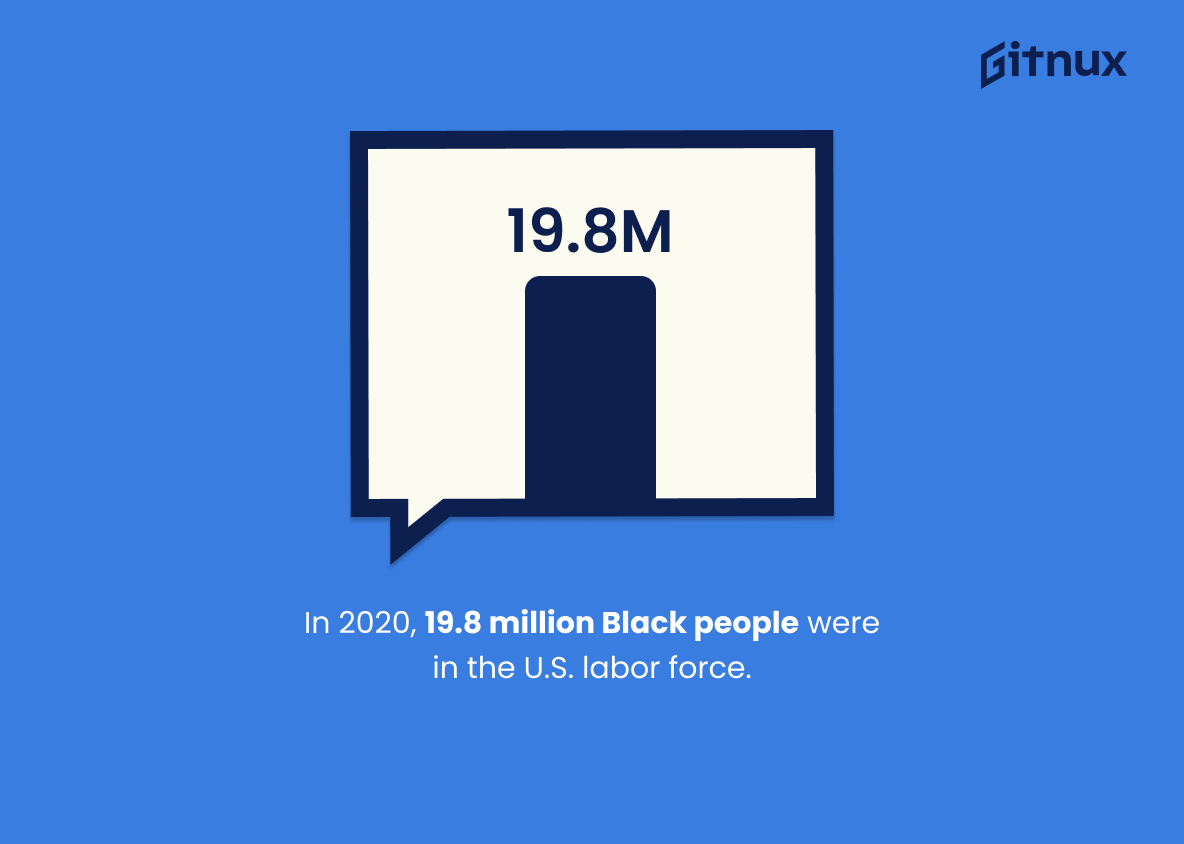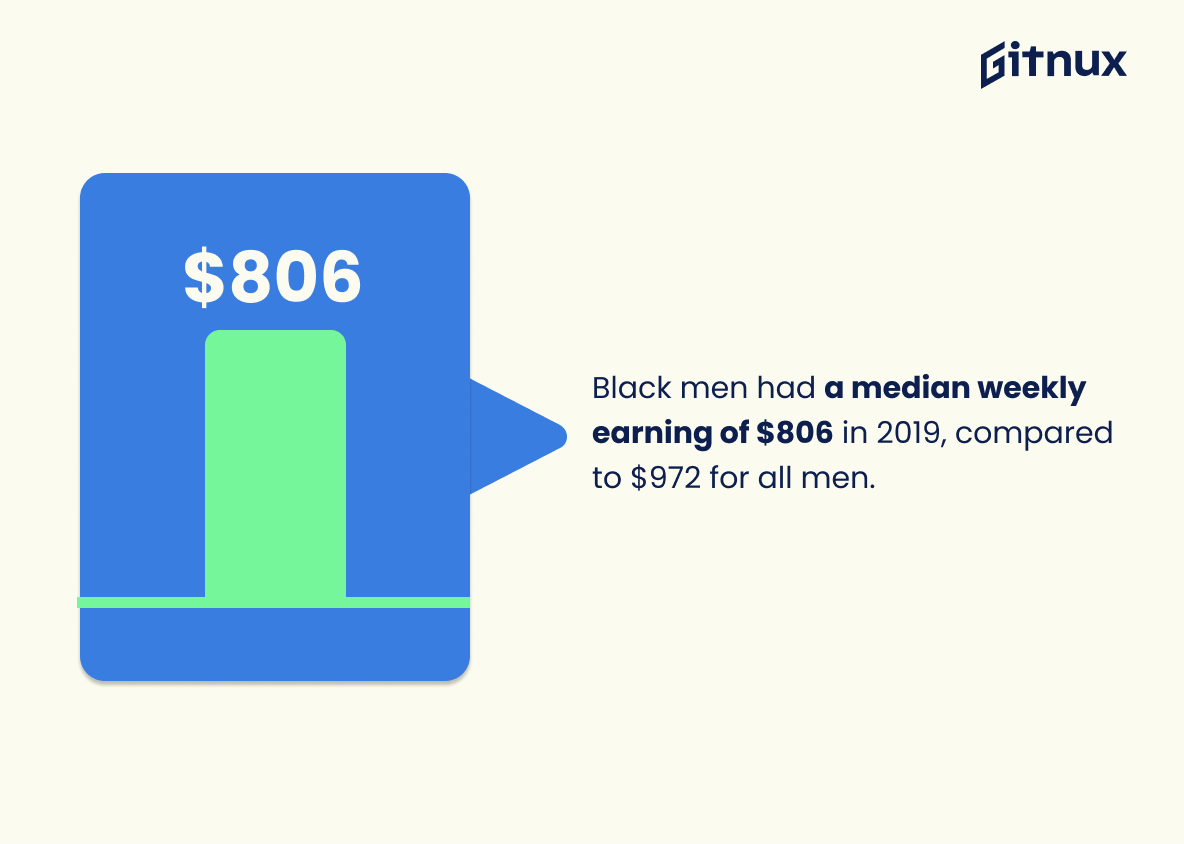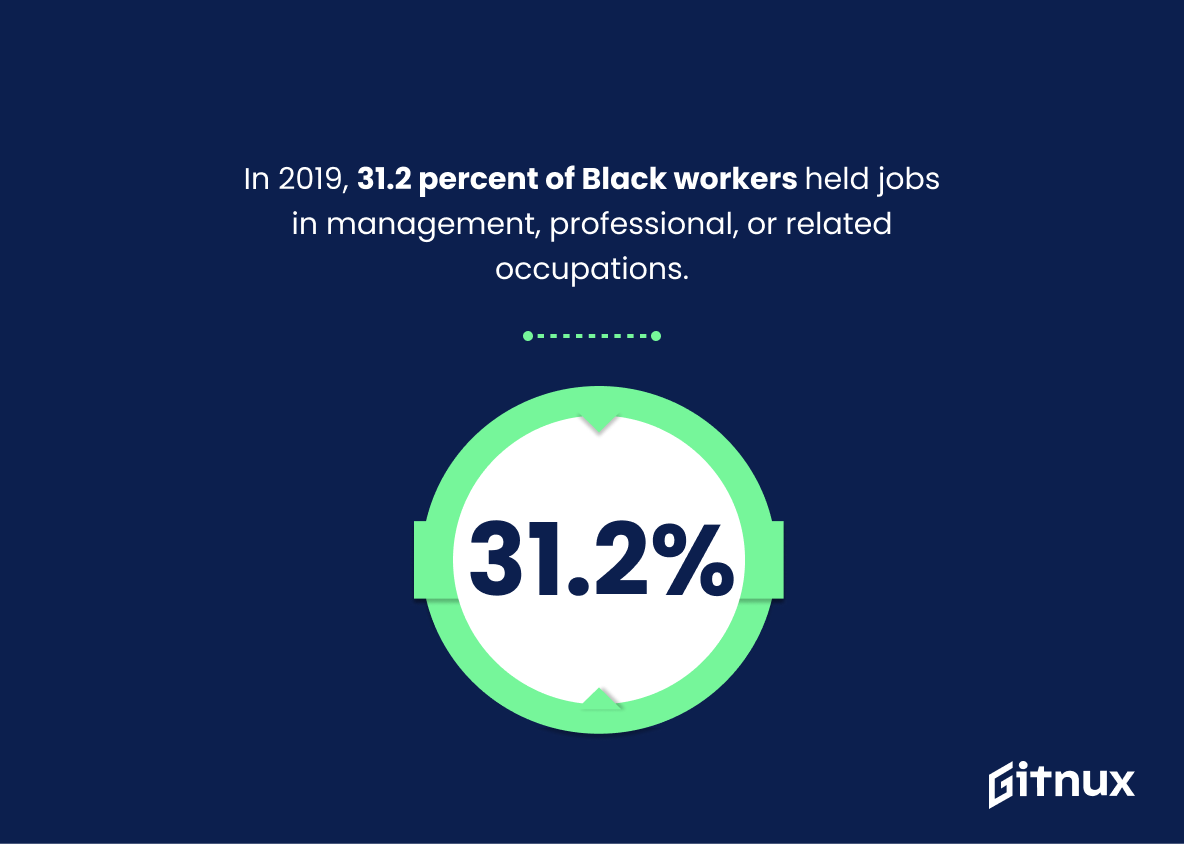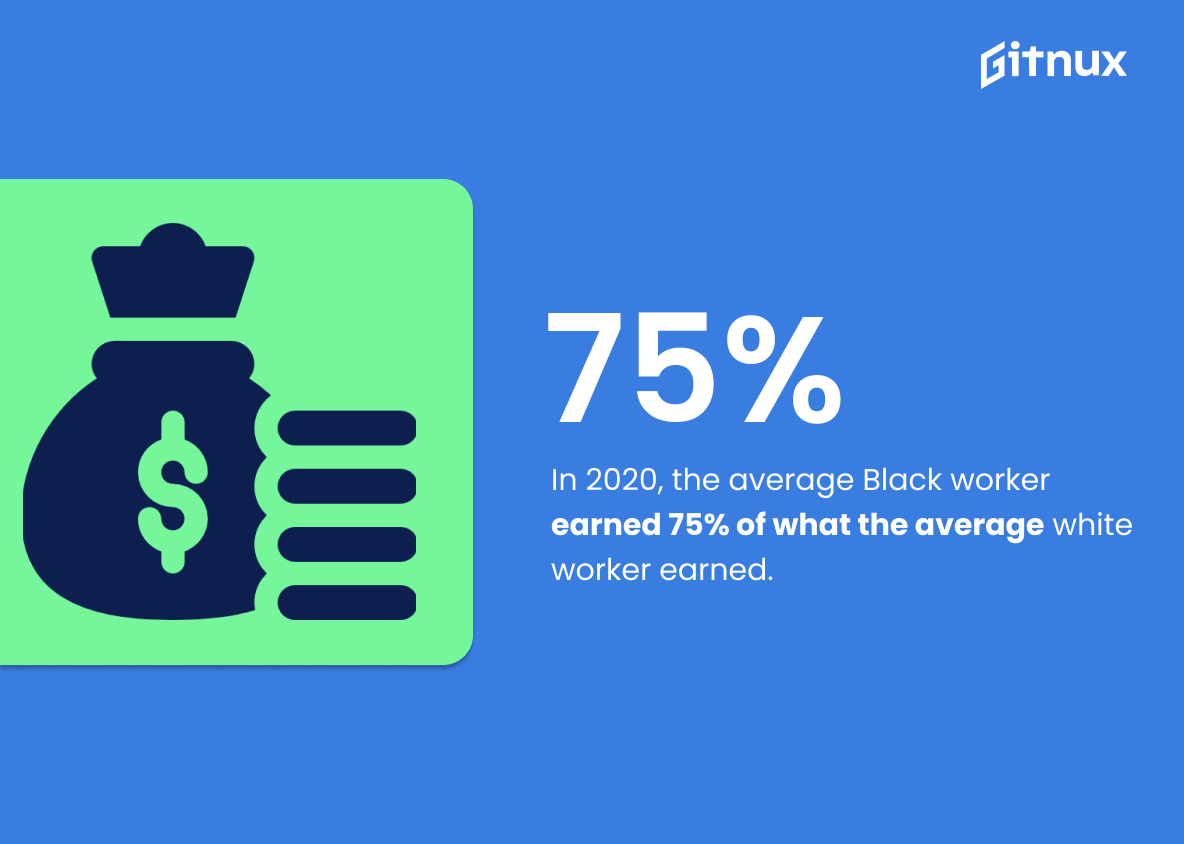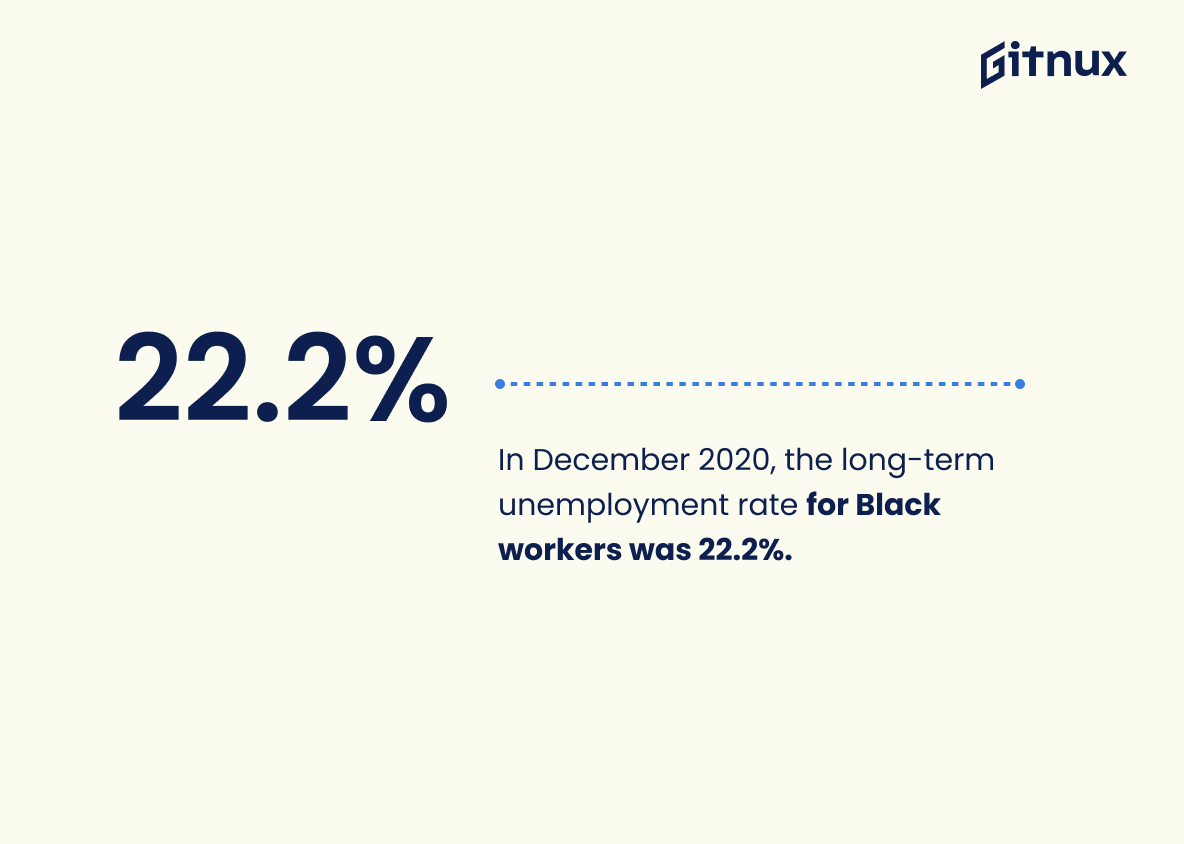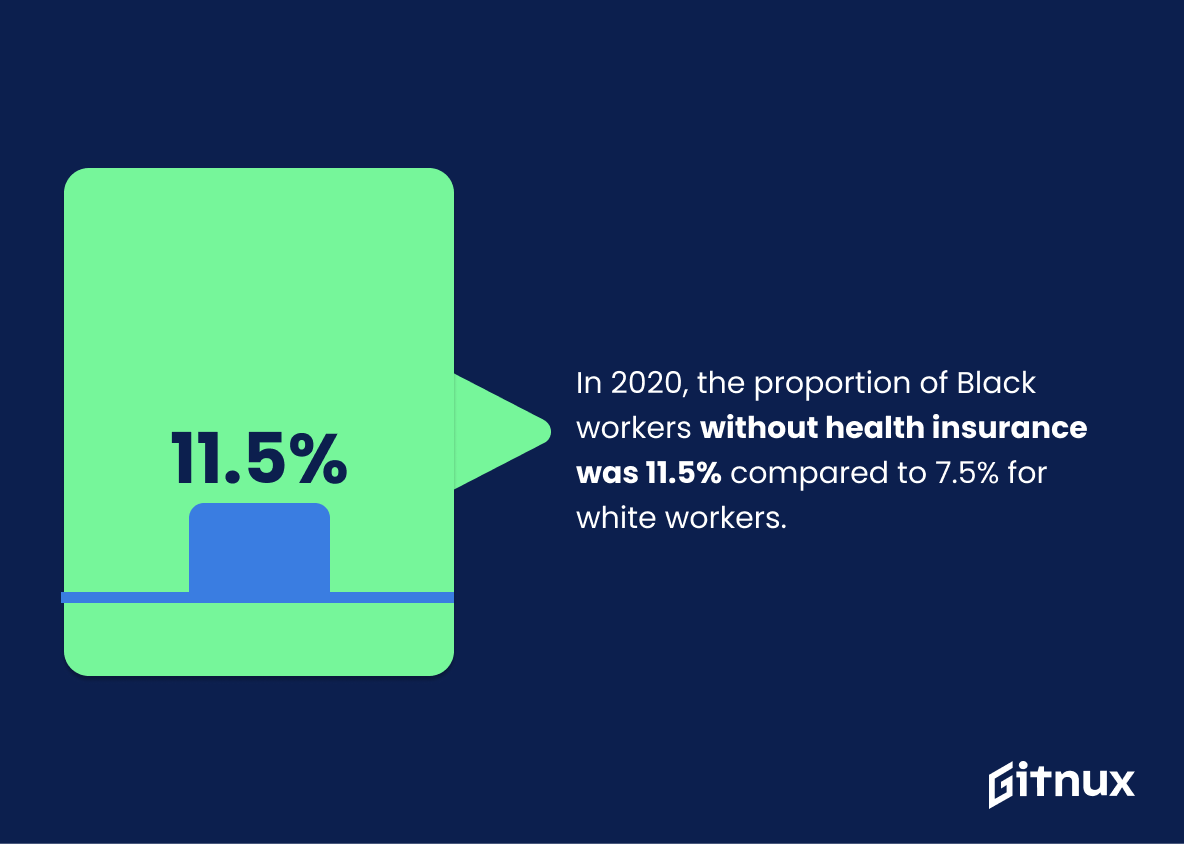Navigating through the complex dynamics of the job market can often feel like traversing an intricate maze. This journey becomes more intricate still when we delve into the disparities of employment opportunities within ethnic groups, such as those observed in Black employment statistics. As we stand at the intersection of economic development and social justice, it has never been more crucial to understand, engage with, and address these statistics.
Join us as we unpack the current state of Black employment, delving deep into the data, trends, and underlying factors that contribute to the landscape of job opportunities for Black individuals. From policy implications to potential strategies for change, our exploration will provide you with an insightful perusal of the employment challenges and opportunities within the Black community.
The Latest Black Employment Statistics Unveiled
As of January 2022, the unemployment rate for Black Americans was 7.6 percent, consistently higher than national rates.
Delving deeper into the provided data reveals a compelling narrative: as of January 2022, the unemployment rate for Black Americans stood at 7.6 percent, a figure steadfastly exceeding national averages. This information is the cornerstone in a mosaic of Black Employment Statistics, casting a light on the challenges and disparities faced in the job market by the Black community.
Whether it’s conscious or unconscious bias, lack of opportunities, or educational disparities, this figure hints at a labyrinth of underlying issues. Scrutinizing such statistics invites us to address these systemic inequities while pushing for comprehensive and inclusive reforms, ultimately aiming for an equitable job market. As a benchmark of economic health, this figure provokes an in-depth conversation about racial parity in employment and deserves attentive exploration in the discussion of Black Employment Statistics.
In 2020, 19.8 million Black people were in the U.S. labor force.
The multi-layered fabric of the blog post on Black Employment Statistics is greatly enriched by the inclusion of the figure ‘19.8 million Black people in the U.S. labor force during 2020’. Acting like an anchor, it establishes a solid baseline, and puts into perspective the scale of the Black labor pool.
Beyond simply painting a picture of numerical bulk, this statistic magnifies the critical role that the Black community plays within the broader economic machinery of the US. It also triggers a deeper discourse around labor market characteristics and barriers faced by this population group, like wage disparities, occupational segregation, or unemployment rates. Hence, crafting a true understanding of Black Employment Statistics is fundamentally incomplete without referencing this specific figure.
Black workers made up 12.3 percent of the U.S. labor force in 2019.
Painting a more vivid picture of the racial composition in the American labor force, the statistic that Black workers encompassed 12.3 percent of the labor force in 2019 provides a critical flashpoint in the narrative on Black employment statistics. It sets up the grounds for a deeper examination and discourse around workforce diversity, revealing a snapshot of where we are on this journey.
Shedding light on this percentage also acts as a crucial yardstick, prompting further reflection on the progress or the lack thereof in racial equality and inclusivity in various professional fields. Not merely a number, but a critical storyline, this figure lays a foundation for challenging stereotypes, encouraging reforms, and nurturing the dialogue about black representation in the workforce.
Black men had a median weekly earning of $806 in 2019, compared to $972 for all men.
In piecing together the complex mosaic of Black Employment Statistics, this statistic serves as a pivotal tile. It reveals a stark earning differential between Black men and their counterparts of other ethnicities in 2019. The median weekly earning for Black men, $806, rests noticeably below the broader $972 average for all men.
This difference underscores not just a diversity challenge, but also strikes at the heart of economic disparity. Unveiling such disparities provides a starting point for thought-provoking discussions, stimulating informed policy recommendations and motivating actions towards achieving equitable workplaces.
In 2019, 31.2 percent of Black workers held jobs in management, professional, or related occupations.
Peering through the lens of this statistic brings colorful depth to the narrative of Black Employment in 2019. It dramatically highlights that 31.2 percent of Black workers were operating in an engaging spectrum of zones including management, professional, or related occupations. This data helps to freshly re-calibrate our understanding of the Black workforce’s adaptive skills, leadership qualities, and their invaluable contribution to these pivotal sectors.
Amid the swathes of figures and percentages, this one quite notably carves out an instance of ongoing progress and strides made in the face of systemic challenges. Furthermore, it provides a solid platform to explore targeted improvement strategies for furthering the inclusion and upward mobility of Black employees in the workforce.
In 2020, the average Black worker earned 75% of what the average white worker earned.
Peeling back the layers of Black Employment Statistics, one stumbles upon a stark revelation. The year 2020 bore witness to a disconcerting truth, the average Black worker’s earnings trailed behind, amounting to merely 75% of their white counterparts’ earnings. This unsettling discrepancy doesn’t just glare as an economic concern, but underscores the persistence of racial pay gaps that continue to eclipse fair employment opportunities.
It’s a numerical testament to the structural barriers and discrimination that asphyxiate equal opportunities, forcing us to reevaluate not just our employment policies, but our societal values as a whole. Understanding this statistic is like holding up a mirror, it reflects where we are as a nation in our journey towards equitable workplaces, and the hours of labor yet to be rolled up towards leveling a tilted playing field.
In 2019, 67.5 percent of Black Americans aged 16 to 64 were in the labor force, versus 76.3 percent of white Americans.
Delving into the depths of Black employment statistics, this 2019 report unveils a chasm between Black and White American labor force participation. The illustration of a 67.5 percent labor force involvement for Black Americans in between the age group of 16 to 64, compared with their White counterparts at 76.3 percent, shines a light on the silent divide ripping through the heart of the American workforce.
Within these numbers, the shades of socio-economic disparity, access to equal opportunities, and the nagging need for purposeful policy reforms find their firm footing. Thus, in the arena of Black Employee Statistics discourse, these figures are of paramount significance. They function not merely as mere statistics, but as a mirror to the ground reality, pinpointing the exact areas that mandate immediate attention.
The percentage of long-term unemployed (those jobless for 27 weeks or more) was 22.2 percent among Black workers as of December 2020.
Delving deeper into the realm of Black Employment Statistics, it’s striking to see that as of December 2020, one in five black workers had been jobless for 27 weeks or longer. Highlighting the enduring struggle faced by this demographic in the job market, this shocking 22.2 percent figure underscores a stark disparity compared to other racial groups.
This percentage is not just another statistic. It is a story, a narrative about long-standing racial disparities in employment opportunities. It provides key context on its own, painting a grim image of African-American community’s hurdle in securing long-term employment and its subsequent negative impacts, such as sliding living standards, reduced economic mobility, and widening income inequality.
Moreover, this narrative doesn’t stop at revealing the evident racial economic division. It serves as the foundation for fruitful discourse on policy formulation and reforms, helping to battle against consistent systemic biases that hinder equal job opportunity access to all. Speaking directly to the core issue of racial disparities in employment, it becomes vital to driving change and promoting equality in the workforce.
As we look beyond just numbers and percentages, we can appreciate the broader socio-economic context these numbers reveal and the crucial conversations they spark around corrective social justice policies and practices.
In 2020, the proportion of Black workers without health insurance was 11.5% compared to 7.5% for white workers.
Highlighting the disparity in health insurance coverage between Black and White workers, as done with the 11.5% vs. 7.5% statistic for 2020, underscores the critical inequities that linger within the employment sphere. It amplifies the conversation around racial disparities in benefits attached to employment, thereby positioning the blog post as a testament to the warranted transformation in Black employment practices. Such a compelling statistic helps frame a narrative of ongoing disparity, propelling the call for comprehensive workplace reforms ensuring fair and equitable health coverage for all employees.
According to 2019 data, about 4.4 percent of black workers were employed in construction jobs.
In painting a comprehensive picture of Black Employment Statistics, the statistic that reveals 4.4 percent of black workers were engaged in construction jobs in 2019 allows a fascinating glimpse into the career paths chosen in this demographic. This slice of information punctuates the narrative with the degree of diversity in the employment sector among black workers, indicating their participation in industries beyond the frequently highlighted fields.
Moreover, this datapoint also offers an avenue to delve into discussions about wage differences, job security, and career advancement in the construction industry versus other fields. This can, in turn, amplify an understanding of wider socio-economic factors at play that influence work choices within the black community.
In 2020, 69.4 percent of Black men were in the labor force, compared to 76.0 percent of white men.
The statistic paints an intriguing narrative involving the disparity in the force participation rates of Black and white men in the labor market in the year 2020. Seeing that the gap rests at 6.6 percent, it suggests the existence of a racial disparity in the employment sector.
A potential reason for this gap could involve structural and systemic factors, individual discrimination, or disparities in education and qualifications. The exploration of this statistic helps underscore the gravity of the issue and rallies the need for more comprehensive policies and initiatives that champion inclusion and equal opportunity for all in the workplace.
The median weekly earnings of black women were $770 in 2019, 87 percent of white women’s median weekly earnings.
Unpacking the nuances of Black employment statistics, this particular figure offers an insightful snapshot into the earning disparities between Black women and their white counterparts. The median weekly earnings of Black women standing at $770 in 2019, which account for only 87 percent of white women’s, is not just a number, but a stark symbol of the economic divide.
This narrative woven in numbers reveals the pressing issue of wage discrepancies, keeping the spotlight on racial inequality even in the employment realm. It underscores the need for further scrutiny, discussion, and ideally, actionable changes in pay parity policies. Therefore, such statistics are not just vital for understanding the current landscape, they also serve as a clarion call for equality in employment compensation.
As of 2020, Black women made up 14 percent of all essential workers in the United States.
Spotlighting the statistic ‘In 2020, 14 percent of all essential workers in the United States were Black women’ is compelling within the panorama of Black Employment statistics. Its significance unearths and magnifies their indispensable presence in the frontlines during an unprecedented global crisis.
This figure echoes the role of Black women as the unsung heroines who continued to serve indispensable services, despite inherent occupational hazards and risks. Furthermore, the statistic initiates a dialogue about the economic dispensation of Black women, their representation across sectors and the policies that can safeguard their well-being and socio-economic trajectory, making it a crucial statistic to examine.
In 2019, 39.5% of employed Blacks aged 25 to 29 had an associate degree or higher education.
The aforementioned statistic infuses an essential perspective into the narrative of Black Employment Statistics in 2019. It brings into the limelight the share of employed Black individuals aged between 25 to 29 holding an associate degree or an advanced educational qualification. This becomes a pivotal measure of the educational attainment level within this demographic, and subsequently a strong determinant of their employability, job quality, and earnings.
Intrinsically linked to these aspects, the higher education level signifies the potential for upward mobility, improved socio-economic status, and professional growth opportunities. Moreover, it underscores structural distinctions in employment across different education levels, helping us delve deeper into the complexities of racial disparities in employment.
In 2018, the unemployment rate for Blacks with a bachelor’s degree was 5.1 percent, higher than the rate for all adults with a bachelor’s degree (2.6%).
Highlighting the 2018 unemployment rate for Blacks with a bachelor’s degree stands as a stark reminder that obtaining higher education was not yet a guarantee of employment parity for Black Americans that year. Revealing a rate of 5.1% compared to the national average of 2.6% for all adults with a similar level of education, the stark contrast draws attention to potential systemic disparities.
This provides a critical point of discussion for anyone examining the multifaceted issues surrounding Black employment statistics. It challenges readers to question why this disparity exists and how it can be addressed, acting as a catalyst for crucial conversations about job market discrepancies, systemic biases, and the need for equitable employment practices.
Of the 19.5 million Black or African American people working in the United States in 2018, 40 percent worked in management, business, science, and arts occupations.
Delving into the realms of Black Employment Statistics, the revelation that, in 2018, a remarkable 40 percent of the 19.5 million Black or African American labor force in the United States were engaged in management, business, science, and arts occupations offers precious insight. This striking figure illuminates a flourishing trend of Black or African American individuals marking their footprints in these prestigious and progressive sectors. It shatters simplistic employment stereotypes and spotlights the diversity and dynamism within this community.
Far from being a mere statistic, this truth underscores a vibrant narrative of upward mobility, broadening career horizons, and a resounding testament to the expanding opportunities for this community. Such a resonant message is pivotal for a blog focusing on Black Employment Statistics as it paints a picture of inclusive growth and furthers a compelling conversation on work diversity and representation.
In 2019, representation of Blacks in professional roles decreased to 7.7%, down from 7.9% in 2018.
Delving into the heart of Black Employment Statistics, the nugget that catches the eye is the slight decline in representation of Blacks in professional roles from 7.9% in 2018 to 7.7% in 2019. This subtle dip sheds considerable light on the underlying disparities in the employment sector, hinting towards potential obstacles faced by this demographic in climbing the professional ladder. It becomes a measuring rod highlighting an area of concern.
This nugget of information, modest but significant, nudges us to dig deeper and introspect about the existing system, ensuring we strive for equal opportunity for all. In the grand tapestry of employment statistics, this thread has immense potential to guide policies, programs and conversations around inclusivity in the employment sector.
Black immigrants represent about 7.2 percent of the U.S. foreign-born population, yet they made up 10.6 percent of all immigrants in the labor force in 2018.
Delving into the heart of these figures, it reveals a fascinating dynamic. Despite constituting just 7.2 percent of the immigrant population, Black immigrants punched above their demographic weight in the labour market, cornering 10.6 percent share in 2018. This surprising disproportion intimates the industrious disposition of this group.
This fine-grained illustration not only underscores the significance of Black immigrants in the U.S. labour sector but also can be instrumental in busting prevailing stereotypes around immigrant employment patterns. Rich implications of this data extend to a multitude of spheres – policy-making, workforce development, social equity, and even the diversity conversation. Ultimately, this serves as an invitation to reimagine how we view immigration, employment, and the crossroads at which they meet.
Each percentage point rise in the Black unemployment rate leads to a decrease in life expectancy of 0.1 years for Black men and women, according to a 2019 study.
In a world ruled by figures and percentages, the vivid nuances of Black Employment Statistics manifest themselves profoundly in day-to-day realities that extend far beyond job numbers. The particular statistic, illustrating a 0.1-year decrease in life expectancy for Black men and women with each percentage point rise in Black unemployment, throws a stark spotlight on the deep-rooted interconnection between employment and quality of life. It undeniably reinforces the significance of economic policies and initiatives geared towards improving Black employment rates.
This correlation is not just about livelihood; it unveils a poignant narrative of survival, health, and longevity within the Black community. Therefore, any discourse on Black Employment Statistics would remain incomplete without acknowledging this poignant connection. The socioeconomic health of the Black community and their evolving prospects are inseparable from the ebb and flow of their employment rates. By weaving this sobering statistic into the fabric of the discussion, the magnitude of the job market’s influence over Black lives is laid bare, making this blog post not only a review of economic parameters but a call for critical, life-enhancing changes.
Conclusion
Black Employment Statistics are not just numbers on a page, but they reflect the lives and livelihoods of a significant portion of our society. Their interpretation can provide insights into social inequality, economic disparities, and historical injustices. While notable progress has been made in some areas, the data indicates that extensive work remains to be done for achieving racial parity in the job market.
Understanding these statistics is a vital step in effecting meaningful change. Each of us, regardless of occupation or socio-economic status, can play a role in recognizing and countering racial inequality in the workforce. By staying informed and advocating necessary changes, we can contribute to a more inclusive and equitable future.
References
0. – https://www.www.bls.gov
1. – https://www.equitablegrowth.org
2. – https://www.www.nber.org
3. – https://www.www.epi.org
4. – https://www.www.census.gov
5. – https://www.www.kff.org
6. – https://www.www.americanprogress.org
7. – https://www.www.dol.gov
8. – https://www.www.ncbi.nlm.nih.gov
9. – https://www.fortune.com
10. – https://www.www.ncsl.org
11. – https://www.nces.ed.gov

